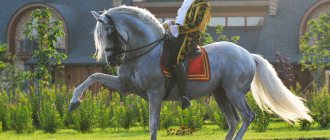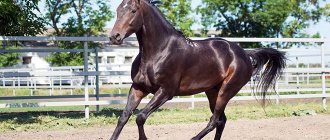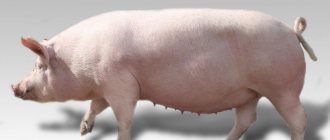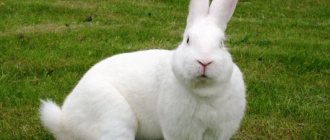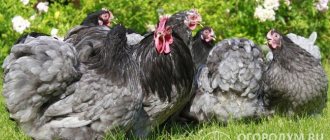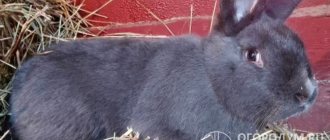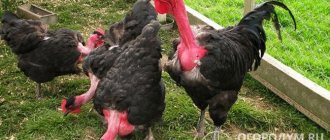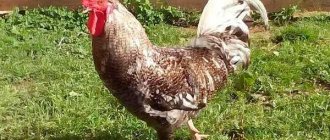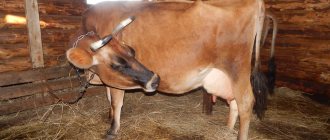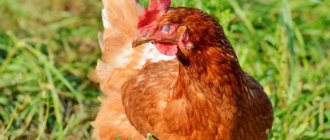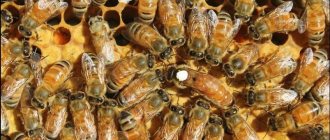Home » Domestic chickens » Crosses and breeds of chickens » Wyandotte chickens
Wyandotte is a breed of chicken that is deservedly considered one of the most beautiful in the poultry yard. It is worth adding excellent egg and meat productivity to its attractive appearance, and Wyandotte can lay claim to the title of an ideal backyard bird.
Description of the breed
| Breed name | Wyandotte |
| Other name | No |
| Productivity direction | Meat-egg breed |
| Average weight | 3.2 kg |
| Average egg production, eggs per year | 200-210 |
| Maturation of pullets, months | 5 |
| Egg size, g | 60-65 |
| Eggshell color | Brown |
| Feathered legs | No |
| Tendency to brood | Moderate |
| Demandingness | Unpretentious, tolerate cold well |
| Bantam shape? | Eat |
| Should a newbie start one? | Yes |
The medium-sized, dense bird is distinguished by remarkable egg production for a breed of universal use, which is easy to conclude just by looking at these well-proportioned laying hens with ideal proportions.
On average, a Wyandotte hen lays about 200 large brown eggs per year, starting to lay quite early - at the age of 5 months, and sometimes a little earlier.
Wyandotte forms a round, heavy carcass by the age of 5-6 months. The table quality is excellent - the meat is white, tender, fine-fiber, juicy.
The average weight of an adult rooster is up to 3.8 kg, chickens – about 2.7 kg.
The dwarf form of the Wyandotte breed was created through the efforts of German breeders. Hens weigh about 900 g, cockerels - up to 1 kg. Egg production is small - about 100-120 eggs per year.
Diet
It is very important for chickens to receive a balanced diet. In order for Wyandottes to develop well and have the best productivity indicators, their diet must include:
- Cereals. It is advisable to give them in the morning and evening. Grains make up at least 50% of the chickens' total diet.
- Sources of calcium. The most common sources of calcium are chalk, crushed shell rock and ground eggshells. Speaking of shells, this is a good source of calcium, but it must be used carefully, since the chicken may recognize it as an egg, and this, in turn, will provoke further pecking of its own eggs. Chalk is also not the best source of calcium, since with its constant use it can stick together, which will cause clogging of the gastrointestinal tract.
- Mash. Mash is an excellent addition to the diet. It is best to give mash at lunch. The mash is ideal because it contains a large amount of substances necessary for poultry. They can be cooked either in meat broth or in plain water.
- Fresh greens. Is an excellent addition to the diet. Fresh greens help reduce feed costs, making keeping this chicken more economical.
With all this, you need to understand that chickens of this breed are quite voracious. If you do not control their diet, you may end up with the bird becoming obese.
Appearance of chickens
In addition to all its excellent performance characteristics, the Wyandotte is a stunningly beautiful bird. Being medium in size, the breed appears a little bulky due to its lush, dense plumage. The tail of chickens is small and neat, while that of roosters is more magnificent, located at an angle of 40°. The pink comb, small rounded earlobes and earrings are red. The eyes are bright, amber in color. Legs are yellow.
The main color of the plumage in most cases is complemented by a contrasting edging of each feather, which gives the chickens exceptional attractiveness.
The original plumage color is silver, which remains the most popular variation today. Shiny wide cover feathers of silvery-white color are trimmed with a clear black border with a green gloss.
In addition to the original silver, there are 16 more recognized colors of these chickens and each amazes with its catchy and at the same time exquisite beauty, the most common are: bordered - golden, lavender, blue, buff; silver outlined (with thin black edging), partridge, buff, blue, black and white.
Possible diseases
The birds are in good health. The most common diseases include:
- Parasitic infestations most commonly affect Wyandots. Therefore, it is necessary to avoid contact with other animals and birds and regularly disinfect the house and nests.
- Arthritis – can develop due to dampness in the chicken coop. To prevent this, you should monitor the litter, change it promptly, especially if it is damp, and provide good ventilation.
- Infectious diseases most often affect young individuals. Preventive measures should be followed and vaccinations should be carried out in a timely manner.
Read about other chicken diseases here. Chicks are most vulnerable to various diseases up to 10 days old, after which their health improves.
Chicken Temperament
This beautiful bird is friendly and gets along well with people. Chickens are easily tamed, having gained the experience of affectionate and patient communication with humans from a young age. They are magnificent hens and reverent mothers.
Despite its peaceful disposition, Wyandotte has a bright personality and in a mixed flock of poultry, chickens tend to dominate their companions of other breeds and species. Roosters are generally peaceful, but will tirelessly defend their harem and territory from the encroachments of strangers.
Chickens are somewhat noisy and like to loudly discuss everything that happens.
At the same time, this is an incredibly positive bird that will decorate any yard and add a touch of homeliness and comfort. Wyandotte chickens and rooster
Where can I buy? Price
It is better to purchase Wyandottes from specialized nurseries. The following have worked well:
- Moscow region, Mytishchi, st. Border dead end, house 4. “Orlovsky courtyard”.
- Moscow region, Balashikha. "Kingdom of Chickens"
The price of a hatching egg is 40-50 rubles. a piece.
An adult rooster of standard size can be bought for 500 rubles.
An adult chicken – about 400 rubles.
Breeding Wyandottes in Russia is not very profitable due to the high price of breeding birds that are brought from abroad, but if you organize activities in this direction, you can make a good profit, since chicks and hatching eggs can be sold at a high price. In addition, the Wyandots are able to provide the farm with high-quality meat and eggs.
0
0
Copy link
Content Features
Luxurious plumage, decent weight and a small comb make the Wyandotte breed resistant to adverse weather conditions and therefore a good choice for owners living in cold regions.
It will not be difficult for strong birds to fly over a low fence, but they are still somewhat lazy and will most likely remain sitting on the fence, looking around the yard from above with the owner’s sharp eye.
This bird does not tolerate being kept indoors very well and it is advisable to give them free range as they are excellent foragers.
Chickens are good brood hens, but the hen needs to be given a separate corner to quietly incubate the chicks, otherwise she can become nervous and even aggressive.
Roosters are active, but when treated calmly, they usually do not behave hostilely, being condescending towards other birds and people.
Characteristic
Wyandottes have an extremely bizarre appearance and can be confused with other breeds. However, becoming familiar with the standards set by veterinarians will help you select healthy purebreds to successfully breed high-producing birds. If you are a beginning farmer, carefully consider all the advantages and disadvantages, analyze possible difficulties, so that the features of care do not become an unpleasant surprise (as well as unexpected changes in productivity).
Appearance and standards
Wyandotte chickens have a specific appearance that makes them stand out from other laying hens. Distinctive features are:
- variegated color of large feathers that fit tightly to the body. In the classic version, the middle part of the feather is white and bordered by a silver-black stripe. There are also golden-red and pure black specimens;
- the body is rounded, the keel is poorly defined, the skeleton and muscles are well developed;
- The tail feathers of hens are white, those of roosters are motley (depending on the main color of the plumage), the braids do not appear;
- small black eyes surrounded by red bumpy skin;
- the body is disproportionate: small head, long neck, straight elongated body and long legs;
- the legs are powerful, strong, covered with dense pale yellow skin;
- the comb is small, the teeth do not stand out, the earrings are voluminous and bright red.
When purchasing chicks that differ in appearance from adults, carefully examine their muscles. Young animals at an early age have a strong build, well-developed legs and wings. The color of the chickens is uneven, although there are no variegated main feathers yet.
If the bird does not fully correspond to the description, then it is not suitable for breeding. However, they should not be completely discarded; they are suitable for egg production.
Character
The Wyandotte breed is distinguished by its pliable, friendly character, which can be considered a significant advantage for a bird. Several roosters can coexist in the same territory without fighting or displaying aggression. Also, thanks to its calm disposition, it can be kept together with representatives of other species. Find out why you need a rooster in a chicken coop here.
The only disadvantage of the breed is their lazy behavior.
Wyandots are often at risk of obesity due to their sedentary, measured lifestyle. To avoid this problem, organize a walking space and a system of perches of different heights.
Origin
American breeders have been working on this breed for several decades. The final copy was received in 1883. Several of the most productive breeds common in North America were taken as a basis: Leghorn, Cochiquin, Dorking, Orpington and Bentham Seabright. The birds arrived in Europe a year later, but in Russia they became known only in 1911. Despite the success in breeding Wyandots (this name is of Indian origin), work on the breed continued for many more years. Today, about 15 subspecies are known, differing in plumage color, body size, and productivity. Also read about Brahma chickens at this link.
When purchasing, check which subspecies the bird belongs to. For example, the presence of brown spots in the plumage is unacceptable for silver wyandots. And for golden ones, gray inclusions are considered a defect.
Advantages and disadvantages
The breed has few disadvantages. The main one is the tendency to obesity, which worsens the taste of meat. Also, with improper weight gain (and the reason may be improper feeding, non-compliance with living conditions, or a sedentary lifestyle), egg production is reduced by approximately 50%.
These crosses have many advantages:
- ability to adapt to new conditions;
- delicious meat, tender and soft;
- fertility, large broods both during natural hatching and in the incubator;
- good health in all weather conditions;
- good egg production rates.
Unstable genes can also be considered a small disadvantage. When accidentally or intentionally crossed with other species, the characteristics of Wyandottes are suppressed.
Advantages and disadvantages of the Wyandotte breed
| Advantages of the breed | Disadvantages of the breed |
|
|
Temperature
Wyandotte chickens (photo and description attached to the article) feel good at outside temperatures of 16 to 18 degrees. If the temperature drops, more calories supplied with food are spent on heating the body, and less is left for egg and meat production.
In cold weather, all the energy of the feed is spent on heat production. Chickens do not have sweat glands, so they do not tolerate heat well. The bird protects itself from overheating by reducing feed consumption and drinking more water. In hot weather, poultry farmers add anti-stress drugs to their drink.
Imperfect thermoregulation of chickens is caused by the lack of feather cover. The hen prevents the chicks from freezing or overheating. When a poultry farmer incubates eggs, he must comply with the requirements presented in the table.
Young animals older than a month regulate their body temperature on their own and do not need to be kept under a brooder.
History of the origin of the breed
The exact origin of the breed is difficult to establish. It is known that the first mention of it appeared in 1860. Then admiring admirers gave the new breed the name American Seabright, later calling it Excelsior, in honor of the famous diamond.
Most likely, Wyandot originates from the Cochin and Seabright breeds. Experts agree that Brahms and Hamburg speckled chickens were also involved in the selection.
The Wyandotte chicken breed received its sonorous name in honor of the ship of the owner of the first purebred individuals.
Room equipment
Wyandotte chickens (photos and descriptions of the breed help to understand the characteristics of its keeping) feel good when kept outdoors on a deep bedding of sawdust, straw, hay or peat. Stocking density is no more than 8 birds/m2, excluding the area for perches, nests, bathtubs, and feed storage. Each bird is provided with a feeding and watering front of 8-10 cm.
Feeders are equipped so that birds cannot knock them over, climb on them and scatter food. Basins should not be used as drinking bowls: the birds will splash water, the bedding will become dirty, and there will be a risk of paw disease and contamination of the eggs that individual hens lay on the floor. It is better to purchase equipment at a specialized store.
The optimal height of the chicken coop is from 1.8 to 2.0 m. Natural ventilation is installed in the middle of the roof. A window is made to ventilate the room. The manhole is equipped with a door that is closed at night to protect the chickens from attacks by nocturnal predators. To walk one standard Wyandotte you will need 5; dwarf - 2.5 m2. It is necessary to provide places where the bird can comfortably hide from rain and sunlight.
For 3-4 laying hens, equip one nest, attach it 35-45 cm above the floor. To prevent chickens from laying eggs on the floor, dummies are placed in the nests. When collecting eggs, it is better not to disturb them; for this purpose, doors are made on the outside of the room.
Perches are made of oval or round wood at a height convenient for birds, and are equipped with ladders. Some individuals take off, so you can arrange a second tier. In winter, the chickens are located on the second floor: it is warmer there. Pallets are placed 20 cm below the perch, since most droppings accumulate there. Poultry farmers believe that the most convenient container for collecting excrement is a wheelbarrow. Therefore, the bottom edge of the pallet is installed 1-2 cm below the top edge of the cart.
Reviews about the breed
Review from: Nadezhda Viktorovna Polskikh, Vinnitsa region, Ukraine.
Pros: very beautiful, wears well
Cons: none.
We decided to get a purebred bird three years ago - we ordered four silver Wyandottes from Poland - three hens and a rooster, and four Rhode Island reds - two pairs. And although all the birds were adults, there were no problems with maintenance either then or now. One Rhode Island rooster died in an accident. The Wyandots were laying great, now those hens slowed down a little, but a year later one hen sat on the eggs - and gave birth to seven excellent large chickens.
Now we keep a flock of twelve Wyandots - eleven hens and one rooster, which is enough for us. I recommend and praise it to everyone - a beautiful, calm bird, I look at it and relax my soul.
Review from: Ivan Kostyukov, Saratov, Russia.
Pros: gorgeous bird, affectionate, good brood hens.
Cons: It's a shame to cut!
We have a flock of fifteen Wyandots, beautiful different colors - partridges are our favorite. They are frost-resistant and winter in our barn without any problems. The rooster is handsome, but at the same time caring and masterful, and has never attacked anyone.
Chickens older than two years old cluck and hatch chicks every year. We leave the chickens and the cockerels for meat. One thing is bad - it’s a shame to kill a bird. Painfully good! The neighbor says that yours are pheasants. There is no better bird than the Wyandottes!
Dear readers, you have the opportunity to add a review about the breed to the article. To do this, write your detailed comment using the contact form and in the near future it will be transferred to the text of the article. If you are a breeder of purebred chickens and sell young stock or eggs, you can include this information, but do not forget to indicate your region of residence.
Breeding
Learning to breed Wyandottes is not easy. In this case, the breeder faces a number of problems:
- It is necessary to master the skills of breeding the required colors, in addition, take into account that selection is fixed on both the paternal and maternal lines. To do this you need to use a color calculator. But it only gives an approximate direction, since there are many hybrids of this breed.
- Breeders recommend avoiding the possibility of obtaining inbrids (crossing within the population), this reduces immunity, egg production and spoils the exterior. This is not easy to do, given that only two lines of Wyandottes are common in Russia - from Poland and from Germany.
- Buying a hatching egg - standard and dwarf eggs differ little from each other in color and size.
- Buying young chickens - the colors of newly hatched chicks can be quite varied. What color an adult bird will be can be found out only after the first molt.
Wyandottes are bred on farms to preserve genetic material for breeding crosses.
Removal methods
Chicks are hatched both in incubators and naturally. In this they are no different from other breeds of chickens; there are no special requirements for the process.
Eggs selected for incubation must weigh at least 55 g and have a smooth and undamaged surface. They should be stored for up to 14 days in a cool place.
During natural incubation, so many eggs are placed under the chicken so that they are completely hidden under it in one layer. The hen will hatch them for 20-21 days. And then, she will take on the responsibilities of caring for the chicks. All that remains for the breeder is to provide the necessary food and clean water on time.
When incubator breeding, the following sequence is followed:
- the incubator is heated to 25 °C (this is considered room temperature);
- the eggs are brought into the room in which the incubator is installed so that they warm up to the room temperature;
- the eggs are placed in the incubator and the temperature is set to 39 °C;
- on day 12 the temperature is reduced to 38.5 °C;
- from the 19th day until hatching (20-21 days) the temperature is maintained at 37-38 °C.
Once hatched, chicks should be kept in a brooder and the temperature controlled. Or you can put it on a hen, if you have one (the chicken can be of any breed).
From 2 weeks of age, chicks are placed on open grass for 15-20 minutes. You can equip a covered, draft-proof enclosure specifically for young animals. It is important that the walking area has both sun-warmed and shaded areas. Walking time is increased gradually.
After fledging, the chickens are transferred to a common chicken coop, but the roosting area must additionally be heated using an infrared lamp if the young are raised without a hen.
Chickens are fed boiled eggs mixed with semolina or starter feed until they are one month old. Afterwards, add herbs, dairy products, mixtures of meat and fish waste.
Character
The temperament of these feathered beauties is also worthy of admiration. They are incredibly friendly, peaceful, and calm. They can find a common language in any group, and are equally friendly towards both representatives of their own breed and completely different types of poultry.
They can share a walking yard with geese, ducks, turkeys and other residents of the owner's yard. Chickens are not timid - they are difficult to scare. On the contrary, they very quickly get used to their owners, are given into the hands and respond to a person’s call.
